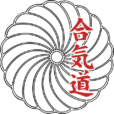Based, in part, on studies of classical violinists and other “experts” by Anders Ericsson and popularized in the book Outliers by Malcolm Gladwell, the “10,000-hour rule” proposes that approximately 10,000 hours of goal-directed, deliberate practice is necessary for a person to achieve expertise in any domain. Ericsson described the “10,000-hour rule,” as an oversimplification of his work. Practice alone does not result in expertise. Ericsson hypothesized that the key is the quality of practice. Deliberate practice is not mindless repetition, but instead is purposeful and focused with the goal of analyzing current performance and how it can be improved. In his book, Peak, Ericsson also emphasized the critical role of an expert coach, who can identify areas of weakness and guide the learner to develop strategies for improvement. In Peak, Ericsson suggests that obtaining and maintaining mastery is necessarily a life-long process. Individuals who feel that their skills are “good enough” and do not continue to engage in deliberate practice perform worse than individuals with fewer years of experience.
How does this apply to our Aikido practice? To me, the concept of deliberate practice includes the concept of beginner’s mind. This is the idea that each time we come to the mat, we approach our instruction with open eyes, and mind, and heart. We attempt not to simply repeat the technique that is demonstrated in the way that we “know” how to do it, but we try to see what the instructor is demonstrating and do that thing. This is especially important if what the instructor is demonstrating feels new and uncomfortable. But the truth is that learning is uncomfortable. It is only in those moments of discomfort that progress occurs.
Another way in which this applies to our Aikido practice is the concept of intentionality. If I go out and just do random things, I am not going to make progress. For example, if I am a golfer, I am not going to improve my game if I just go out and play 18 holes every day. I will improve if I go to the driving range and the putting green and put in the time examining my current skills in driving, putting, and chipping and figuring out how to progress in these individual areas. Within the constraints of what is being taught, what is my intention for my Aikido training today, this week, this month, this year? Perhaps it is to work on blending, or kokyu, or entering, or rolling more smoothly, or any one of a million details that, if improved, will make my Aikido better. I can recall Choate Sensei saying that he would choose something specific and focus on that for 6 months, until he felt comfortable with that thing, and then choose another. Or, to quote Mary Sensei, “Focus on a little – learn a lot. Focus on a lot, learn nothing.”
There is the role of an expert coach, or, in our case, Sensei. At Nashville Aikikai, we are privileged to have two Dojo Cho who trained directly with Saotome Sensei and who are both excellent teachers. But we should also take advantage of seminars at our and other dojos where we can learn from other talented and respected instructors. Seminars and camps provide an excellent opportunity to gain new perspectives on the art and to be pushed into our zone of discomfort – where true learning occurs.
Finally, there is the role of our Sempai, our seniors. When they train with us, it is important that they train at a level that is safe for us. No Mark-Marta Thunderdome with the 6th Kyu’s. But it is also their role to push us just a little bit, just into that zone of discomfort where learning can occur. And then to leave us alone and let us learn. We talk a lot about not teaching on the mat, by which we really mean not instructing your partner. But a Sempai is offering an invaluable experience for their Kohei if they can gauge their Kohei’s ability and deliver an attack or a technique that pushes that person just past their comfort level, where true learning and not just rote repetition occurs.
I am sincerely grateful to all the Senseis, Sempai, and Kohei from whom I have had the privilege to learn during my Aikido training.
May you all be safe and well.
RW (retired)
